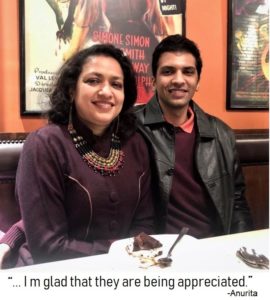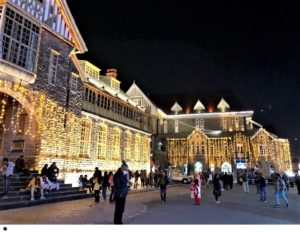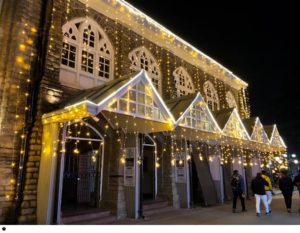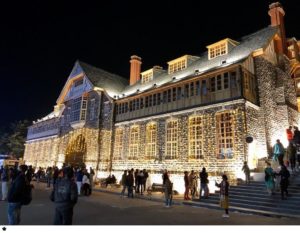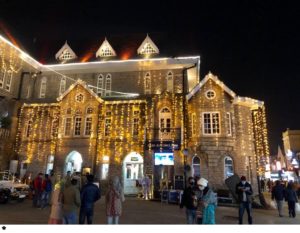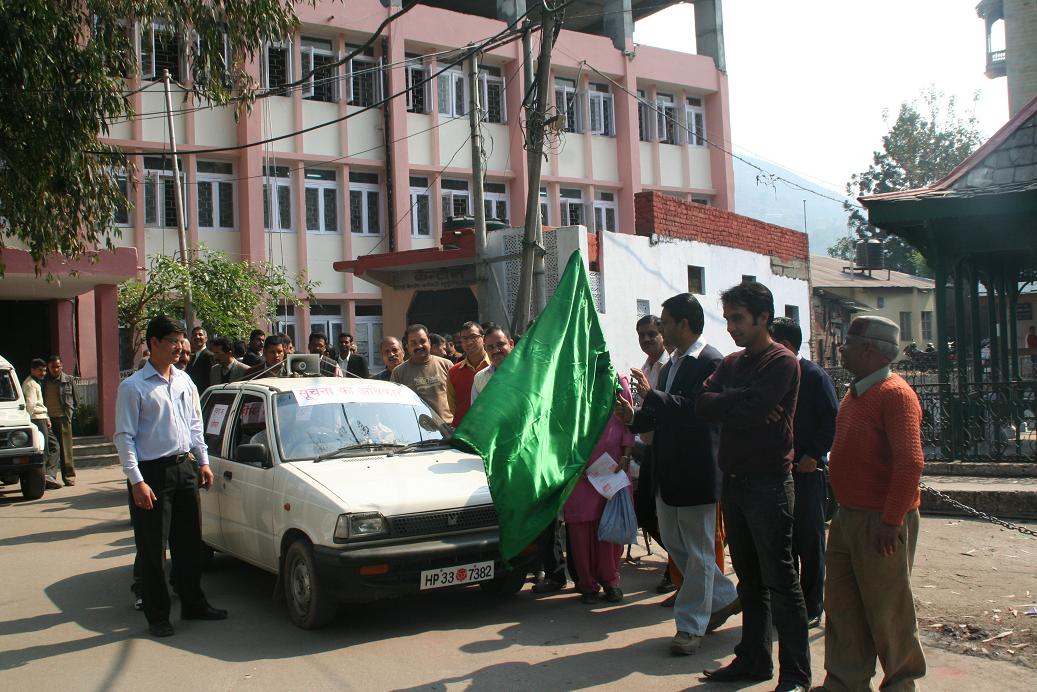Himachal is christened “dev bhoomi” from times immemorial – “the land of the gods.” The name of the state is a reference to its setting; Himachal means “snowy slopes” and Pradesh means “state.”
Statehood is a people’s achievement. Formerly a union territory, Himachal Pradesh emerged as the eighteenth state of the Indian Union of India on January 25, 1971. This year, the state-level Golden Jubilee was celebrated with great enthusiasm and fervor at the historic Ridge of Shimla at an elevation of about 7,100 feet. The city is the largest and most popular mountain resort in the country. It remained the summer headquarters of pre-independence British viceroys; it is now the state capital.
The glitter symbolizes the promise of something good and adventurous. I found some impressive photographs of the illumined structures, doing rounds on social media, later known to be shot by Anurita Saxena; a comedy of errors.
‘This is superb artwork reflecting your high-level skills,’ I complimented.
- There is a saying that the camera never lies. The eye and the camera both need light and illumination to work.
- It is “drawing with light”. Without light, there is no illumination. For a photographer, the goal is to create photographs that are pleasing to the eye.
- Photography is about capturing light and recording it, whether on paper, or more frequently now, in a digital format. With a digital camera, you can even see then and there the difference between what you see in front of you and what the camera recorded. Our eyes are better able to handle wide differences in light intensity.
- Lighting is a key factor in creating a successful image. Lighting determines not only brightness and darkness but also tone, mood, and the atmosphere. We have to use light to help us create the illusion of depth in our images.
- Photographic lighting is the illumination of scenes to be photographed. A photograph simply records patterns of light, color, and shade; lighting is all-important in controlling the image.
- Illumination is desired to give an accurate rendition of the scene. Lighting is a crucial aspect of a photograph. Colors can be used to lead the viewer’s eyes and draw attention to certain parts of the photo. Yellow is the most visible color of all the colors that the human eye notices first.
- Lighting or illumination is the deliberate use of light to achieve practical or aesthetic effects. Lighting includes the use of artificial light sources like lamps and lighting fixtures that are available in a wide variety of styles for various functions.
- The most important function is as a holder for the light source, to provide directed light, and to avoid visual glare. Some are very plain and functional, while some are pieces of art in themselves.
- An important property of light fixtures is the luminous efficacy. The more transparent the lighting fixtures are the higher efficacy. Shading the light will normally decrease efficacy but increase the directionality and the visual comfort probability.
- LED lamps have been advocated as the newest and best environmental lighting method. . According to the Energy Saving Trust, LED lamps use only 10% power compared to a standard incandescent bulb.
- Nearly any material can be used, so long as it can tolerate the excess heat and is in keeping with safety codes. The International Commission on Illumination (CIE) is an international authority and standard defining organization on color and lighting.
………………………………………………………………………………………………………………………………………………………..
*Prof. Anurita Saxena 25th January,2021
Prof. (Er.) Chander P Mahajan is an art critic & a free lance journalist. The Environmentalist stays in Shimla and Dalhousie, Himachal Pradesh, India.


